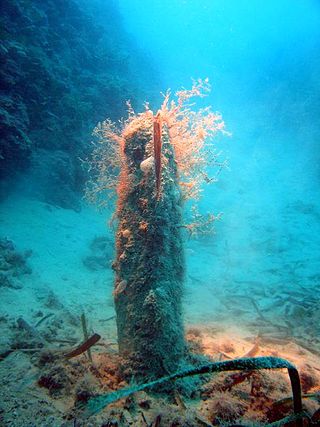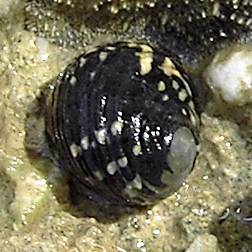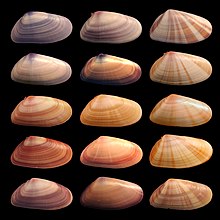
Murex is a genus of medium to large sized predatory tropical sea snails. These are carnivorous marine gastropod molluscs in the family Muricidae, commonly called "murexes" or "rock snails".

Ostrea is a genus of edible oysters, marine bivalve mollusks in the family Ostreidae, the oysters.

Lottia is a genus of sea snails, specifically true limpets, marine gastropod mollusks in the subfamily Lottiinae of the family Lottiidae, one of the families of true limpets.

Dosinia is a genus of saltwater clams, marine bivalve molluscs in the family Veneridae, subfamily Dosiniinae Deshayes, 1853. The shell of Dosinia species is disc-like in shape, usually white, and therefore is reminiscent of the shells of Lucinid bivalves.

Tellina is a widely distributed genus of marine bivalve molluscs, in the family Tellinidae.

Buccinum is a genus of medium-sized sea snails, marine gastropod molluscs in the family Buccinidae, the true whelks.

Trochus is a genus of medium-to large-sized, top-shaped sea snails with an operculum, of the family Trochidae, the top snails.

Siphonaria is a genus of air-breathing sea snails or false limpets, marine pulmonate gastropod molluscs in the family Siphonariidae, the false limpets.

Turbo is a genus of large sea snails with gills and an operculum, marine gastropod molluscs in the family Turbinidae, the turban snails.

Pinna is a genus of bivalve molluscs belonging to the family Pinnidae.

Natica is a genus of small to medium-sized predatory sea snails, marine gastropods in the subfamily Naticinae of the family Naticidae, the moon snails. The genus was erected by Giovanni Antonio Scopoli in 1777.

Nerita is a genus of medium-sized to small sea snails with a gill and an operculum, marine gastropod molluscs in the subfamily Neritinae of the family Neritidae, the nerites.

Patella is a genus of sea snails with gills, typical true limpets, marine gastropod mollusks in the family Patellidae, the true limpets.

Hexaplex is a genus of medium-sized to large sea snails, marine gastropod mollusks in the subfamily muracinae of the family Muricidae, the murex shells or rock snails.

Fissurella is a genus of small to medium-sized sea snails or limpets, marine gastropod mollusks in the subfamily Fissurellinae of the family Fissurellidae, the keyhole limpets.

Venerupis is a genus of marine bivalve molluscs in the family Veneridae commonly known as carpet shells. The valves are robust and rhomboidal with the umbones turned-in and nearer the anterior end. The posterior end is wedge-shaped and the internal margins of the valves are smooth. There are 3 or 4 cardinal teeth on each valve. The foot is large and the siphons are of medium length and united except at the very tip.

















